Northrop P-61A Black Widow
Glass Nose
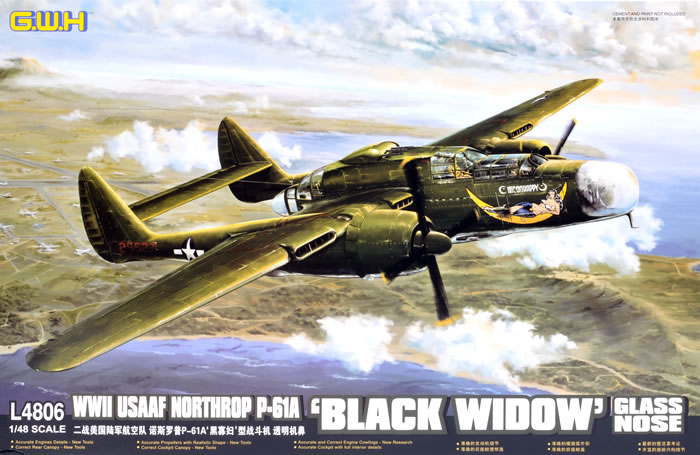
G.W.H., 1/48 scale
S u m m a r y |
Description and Stock No.: |
G.W.H. Kit No. L4806 - Northrop P-61A Black Widow Glass Nose |
Contents and Media: |
180 parts in light grey plastic; 12 parts in clear plastic; photo-etched fret; brass tube; two decal sheets with markings for two aircraft. |
Price: |
TBA |
Scale: |
1/48 |
Review Type: |
First Look |
Advantages: |
Includes retooled corrections for problems found in the initial release; easily the best “out of the box” kit of this type available in any scale; crisp and finely recessed panel lines; raised surface detail where appropriate; separate control surfaces including flaps that may be fixed open or closed; poseable crew entry doors and ladders; includes drop tanks; sparkling clear parts; high level of detail including photo-etched parts. |
Disadvantages: |
Small ejector pin marks in a few inappropriate places; fabric / rib texture will be a bit heavy for some tastes; one-piece propeller assembly. |
Recommendation: |
G.W.H.'s latest 1/48 scale Northrop P-61A Black Widow is even better than the original release thanks to its various corrections and the options of a clear nose and upper gun turret. |
Reviewed by Brett Green

G.W.H's 1/48 scale P-61A Black Widow Glass Nose will be available online from Squadron.com
Both the Lufwaffe and the RAF were caught on the hop in 1940 with the commencement of large-scale night bombing campaigns. Initially, unmodified day fighters were pressed into service as nocturnal defenders, vectored to their targets by the relatively primitive radar of the day.
Eventually, a higher degree of success was achieved on both sides when radar was fitted to the aircraft themselves.
The American military observed the early evolution of the radar-equipped night fighter. When war broke out in the Pacific, the US Navy fitted Hellcats and Corsairs with wing-mounted radar pods to take the fight to the Japanese after dark.
The US Army Air Corps, however, ordered a dedicated night fighter design. Northrop's proposal for this specification was the XP-61, a large twin engine aircraft with a crew of three and radar mounted in the nose. It featured a number of innovations including slotted flaps and "spoilerons" that popped up from the wings' upper surfaces instead of conventional ailerons. The XP-61first took to the air on 26 May 1942.
Operational service commenced in mid-1944, and the Black Widow's first victim fell on 6 July. During its short wartime career, the P-61 Black Widow served in the European, Mediterranean, Pacific and Burma/China/India theatres. Although large and heavy, it could operate from short fields and was successful in its intended role despite being deployed in relatively small numbers. In fact, the Black Widow was credited with the very last aerial victory of the Second World War on 14 August 1945.
In addition to its night fighting role, the Black Widow also undertook reconnaissance and intruder missions.
What’s in the box?
Great Wall Hobby released their early version of the 1/48 scale P-61A Black Widow back in August 2011. This was a very nice kit that featured crisp recessed surface features and a high level of detail.
It also had a number of shortcomings, some of which were easy to fix, and others that would require more work or aftermarket replacement. It did not take Great Wall Hobby long to announce that the next version of their Black Widow would address the bulk of these issues with re-tooled parts.
Great Wall Hobby, under its new Trademark name G.W.H, has now released its "glass nose" version of the P-61A.
Great Wall's 1/48 scale P-61A Black Widow Glass Nose comprises around 180 grey plastic parts, 12 parts in clear plastic, a photo-etched fret, a length of brass tube and two decal sheets with markings for two aircraft.
The differences between the early version released last year and the "glass nose" release are the inclusion of the 4x.50 ca upper gun turret and a frosted Perspex nose.
The new gun turret looks well done.
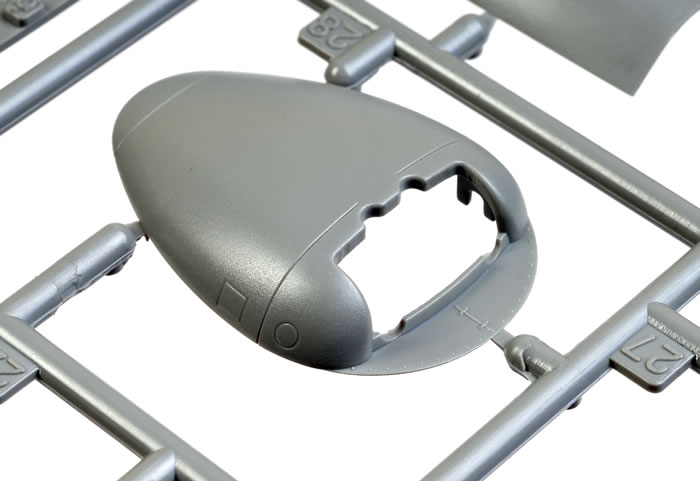
It includes a separate mount for the four .50 cal machine guns, the tubular mounting structure and the remote controls for the gunner / radar operator.
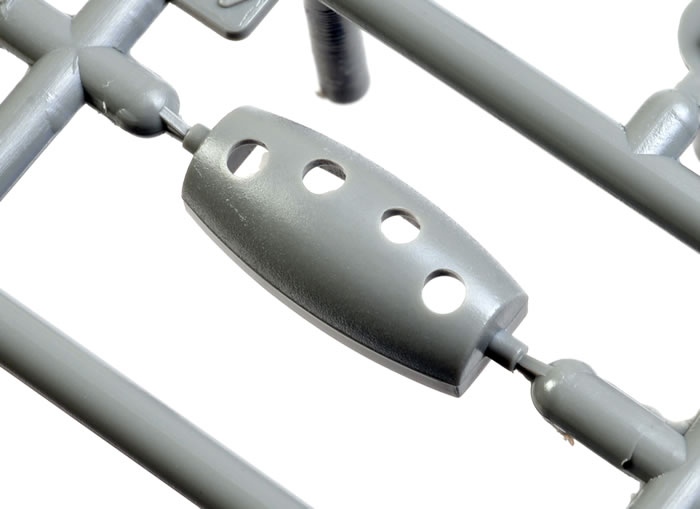
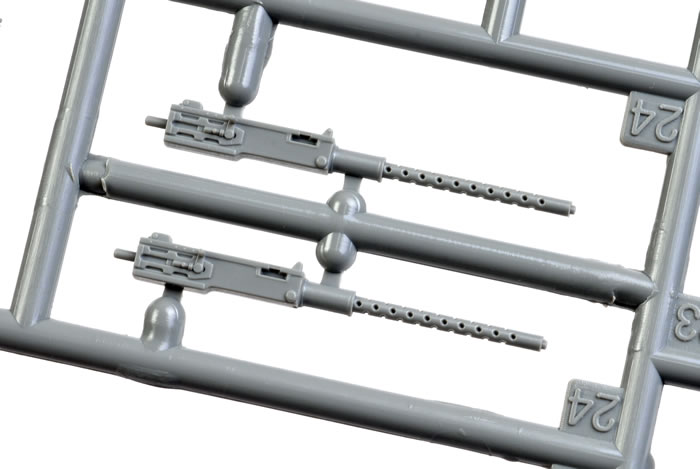
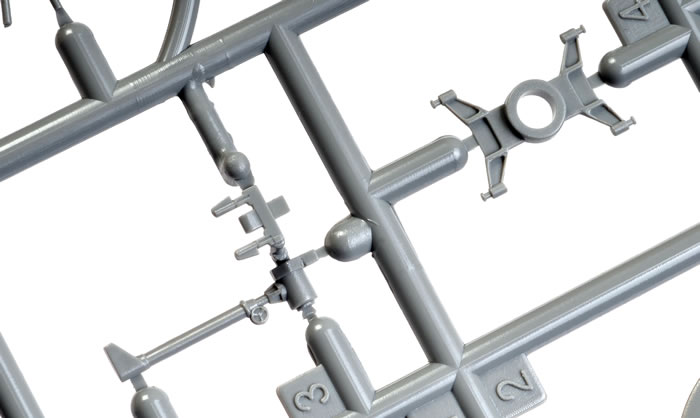
The new clear nose is not the same as the "review-sample only" version that was supplied last year. It is frosted, and appears to have been revised in shape and length.
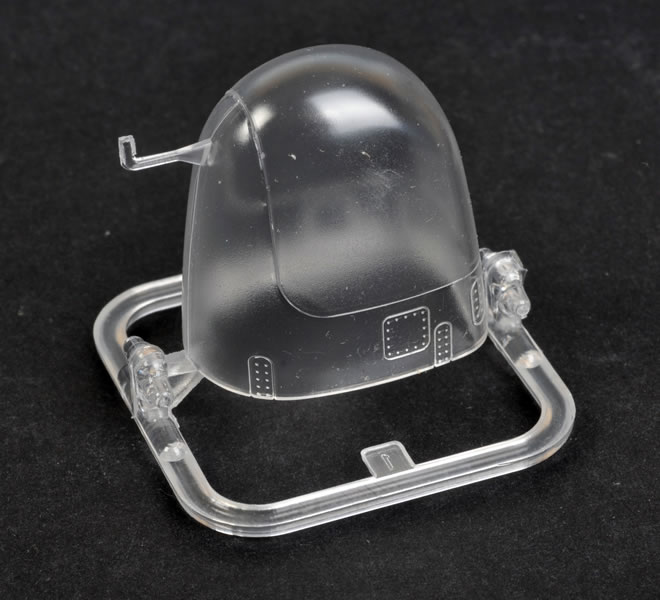
However, many modellers will be more interested in the improvements of the existing parts. Let's take a look at what changes G.W.H has made.
The opening in the engine cowling has been significantly widened to a more accurate size. This makes a big difference to the appearance of the model.
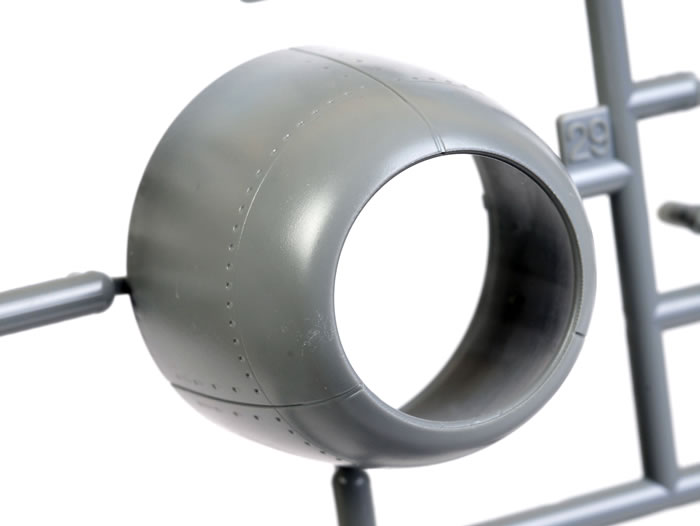
G.W.H also now includes cylindrical crank case housings. Magnetos are also supplied with this kit, and a photo-etched grille is provided for the vent at the bottom rear of the engine nacelle.
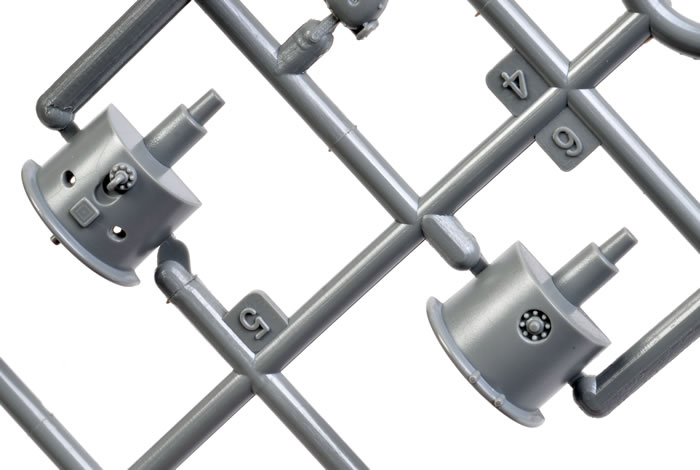
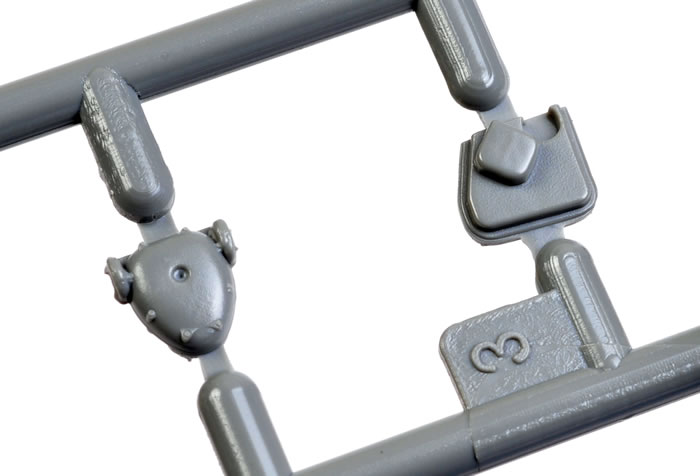
The shape of the propeller blades has been corrected, but each assembly is still one-piece.
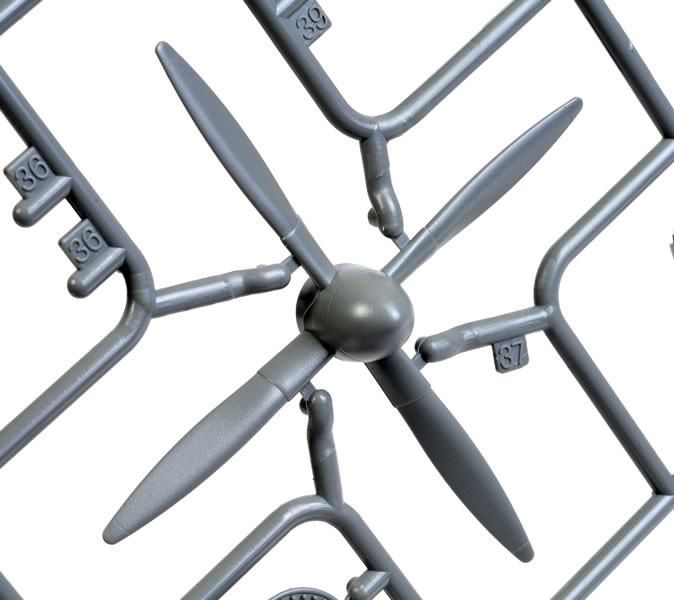
Another major revision is the size and frame arrangement of the rear canopy.
G.W.H deserves credit for taking the expensive step of retooling many of the important areas of their Black Widow kit to deliver a much-improved P-61A.
The inclusion of the upper gun turret and the frosted nose will be welcomed by modellers too.
I have already built the initial Great Wall Hobby P-61A Black Widow and found that it fitted well and presented few challenges. This release should be a troube-free build too.
Highly Recommended
Thanks to Great Wall Hobby for the sample
Review Text and Images Copyright © 2012 by Brett Green
Page Created 21 May, 2012
Last updated
21 May, 2012
Back to HyperScale Main Page
Back to Reviews Page

|
Home
| What's New |
Features |
Gallery |
Reviews |
Reference |
Forum |
Search